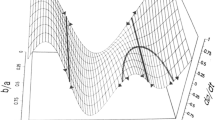Abstract
In this paper I discuss one of the key issuesin the philosophy of neuroscience:neurosemantics. The project of neurosemanticsinvolves explaining what it means for states ofneurons and neural systems to haverepresentational contents. Neurosemantics thusinvolves issues of common concern between thephilosophy of neuroscience and philosophy ofmind. I discuss a problem that arises foraccounts of representational content that Icall ``the economy problem'': the problem ofshowing that a candidate theory of mentalrepresentation can bear the work requiredwithin in the causal economy of a mind and anorganism. My approach in the current paper isto explore this and other key themes inneurosemantics through the use of computermodels of neural networks embodied and evolvedin virtual organisms. The models allow for thelaying bare of the causal economies of entireyet simple artificial organisms so that therelations between the neural bases of, forinstance, representation in perception andmemory can be regarded in the context of anentire organism. On the basis of thesesimulations, I argue for an account ofneurosemantics adequate for the solution of theeconomy problem.
Similar content being viewed by others
References
Beer, R.: 1990, Intelligence as Adaptive Behavior, Academic Press, San Diego, CA.
Braitenberg, V.: 1984, Vehicles: Experiments in Synthetic Psychology, MIT Press, Cambridge, MA.
Brooks, R.: 1999, Cambrian Intelligence, MIT Press, Cambridge, MA.
Chemero, A.: 2000, ‘Anti-Representationalism and the Dynamical Stance’, Philosophy of Science 67, 625-647.
Clark, A.: 1997, Being There: Putting Brain, Body and World Together Again, MIT Press, Cambridge, MA.
Cliff, D.: 1998, ‘Computational Neuroethology’, in M.A. Arbib (ed.), The Handbook of Brain Theory and Neural Networks, MIT Press, Cambridge, MA, pp. 626-630.
Cummins, R.: 1989, Meaning and Mental Representation, MIT Press, Cambridge, MA.
Cummins, R.: 1996, Representations, Targets, and Attitudes, MIT Press, Cambridge, MA.
Dennett, D.: 1987, The Intentional Stance, MIT Press, Cambridge, MA.
Dennett, D.: 1998, Brainchildren, MIT Press, Cambridge, MA.
Dretske, F.: 1988, Explaining Behavior, MIT Press, Cambridge, MA.
Dretske, F.: 1995, Naturalizing the Mind, MIT Press, Cambridge, MA.
Eliasmith, C. and Anderson, C: 2000, ‘Rethinking Central Pattern Generators: A General Framework’, Neurocomputing 32–33(1–4), 735-740.
Fodor, J.: 1975, The Language of Thought, Cambridge, MA: Harvard University Press.
Fodor, J.: 1990, A Theory of Content and Other Essays, MIT Press, Cambridge, MA.
Fodor, J.: 1998, Concepts: Where Cognitive Science Went Wrong, Oxford University Press, New York.
Fodor, J. and LePore, E.: 1992, Holism: A Shopper's Guide, MIT Press, Cambridge, MA.
Guillot, A. and Meyer, J.A.: 2001, ‘The Animat Contribution to Cognitive Systems Research’, Journal of Cognitive Systems Research 2(2), 157-165.
Hale, W. and Margham, J.: 1991, The HarperCollins Dictionary of Biology, New York: HarperCollins.
Ijspeert A.J., Hallam J. and Willshaw D.: 1999, ‘Evolving Swimming Controllers for a Simulated Lamprey with Inspiration From Neurobiology’, Adaptive Behavior 7(2), 151-172.
Komosinski, M.: 2000, ‘The World of Framsticks: Simulation, Evolution, Interaction’, in Proceedings of 2nd International Conference on Virtual Worlds, Paris, France, Springer-Verlag (LNAI 1834), pp. 214-224.
Komosinski, M.: 2001, Framsticks Website. http://www.frams.poznan.pl.
Koshland, D.: 1977, ‘A Response Regulator Model in a Simple Sensory System’, Science 196, 1055-1063.
Koshland, D.: 1980, ‘Bacterial Chemotaxis in Relation to Neurobiology’, in W.C. Cowan et al. (eds), Annual Review of Neurosciences 3, Annual Reviews, Inc., Palo Alto, pp. 43-75.
Lycan, W.: 1996, Consciousness and Experience, MIT Press, Cambridge, MA.
MacLennan, B.: 1991, ‘Synthetic Ethology: An Approach to the Study of Communication’, in C.G. Langton, C. Taylor, J.D. Farmer and S. Rasmussen (eds), Artificial Life II: Studies in the Sciences of Complexity, vol. X, Addison-Wesley.
Mandik, P.: 1999, ‘Qualia, Space, and Control’, Philosophical Psychology 12(1), 47-60.
Mandik, P.: 2001, ‘Mental Representation and the Subjectivity of Consciousness’, Philosophical Psychology 14(2), 179-202.
Mandik, P.: 2002, ‘Synthetic Neuroethology’, Metaphilosophy 33, 11-29.
Mandik, P. and Clark, A.: 2002, ‘Selective Representing and World-making’, Minds and Machines 12, 383-395.
Millikan, R.: 1996, ‘Pushmi-pullyu Representations’, in L. May, M. Friedman and A. Clark (eds), Minds and Morals, MIT Press, Cambridge, MA, pp. 145-161.
Millikan, R.: 1984, Language, Thought, and Other Biological Categories, MIT Press, Cambridge, MA.
Millikan, R.: 1993, White Queen Psychology and Other Essays for Alice, MIT Press, Cambridge, MA.
Morse, T.M., Ferree, T.C. and Lockery, S.R.: 1998, ‘Robust Spatial Navigation in a Robot Inspired by Chemotaxis in C. Elegans’, Adaptive Behavior 6, 393-410.
Pierce-Shimomura, J.T., Morse, T.M. and Lockery, S.R.: 1999, ‘The Fundamental Role of Pirouettes in C. Elegans hemotaxis’, Journal of Neuroscience 19, 9557-9569.
Rachlin, H.: 1976, Behavior and Learning, Freeman, San Francisco.
Searle, J.: 1983, Intentionality: An Essay in the Philosophy of Mind, Cambridge University Press, New York.
Taylor, T. and Massey, C.: 2001, ‘Recent Developments in the Evolution of Morphologies and Controllers for Physically Simulated Creatures’, Artificial Life 7(1), 77-87.
Tye, M.: 1995, Ten Problems of Consciousness: A Representational Theory of the Phenomenal Mind, MIT Press, Cambridge, MA.
Walter, G.: 1963, The Living Brain, New York, W. W. Norton.
Author information
Authors and Affiliations
Rights and permissions
About this article
Cite this article
Mandik, P. Varieties of Representation in Evolved and Embodied Neural Networks. Biology & Philosophy 18, 95–130 (2003). https://doi.org/10.1023/A:1023336924671
Issue Date:
DOI: https://doi.org/10.1023/A:1023336924671




